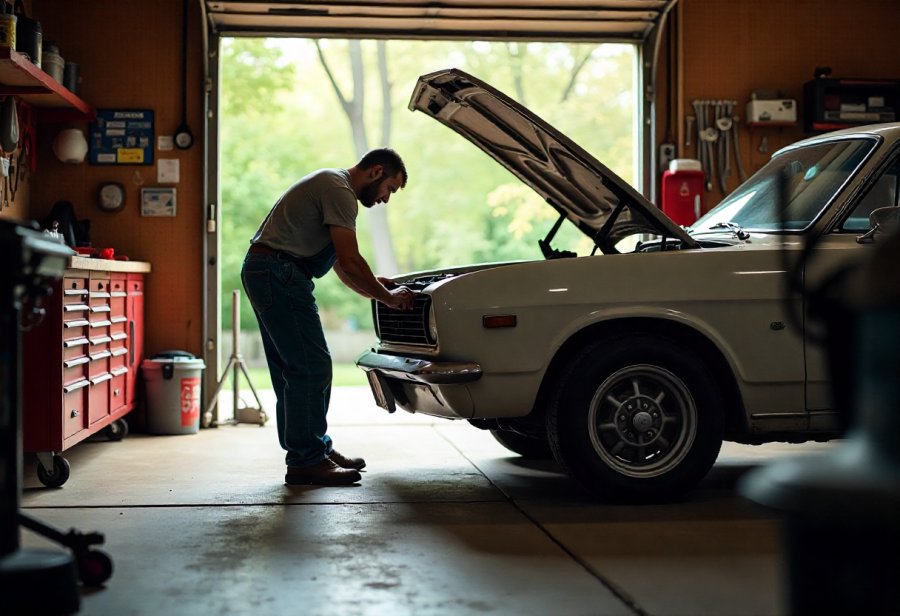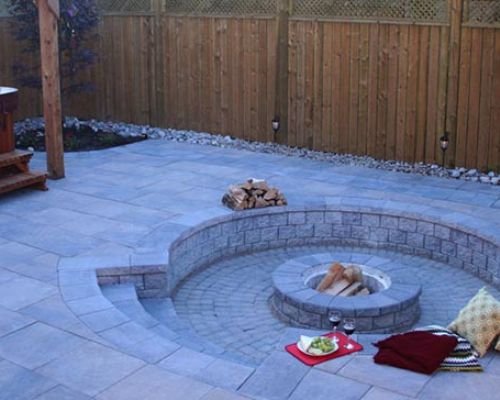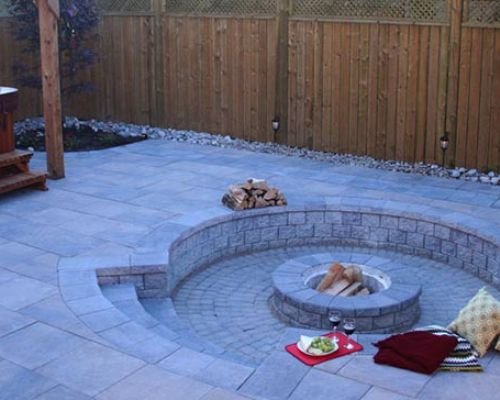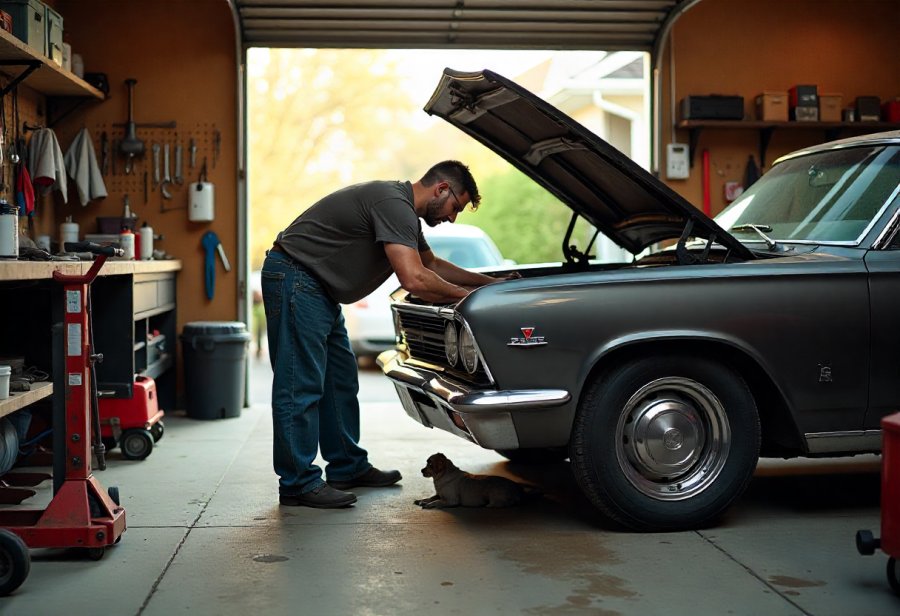Finding the perfect running shoes is more than just choosing a stylish pair—it’s about understanding your unique foot structure, gait, and terrain to prevent injuries and enhance performance. Do you know if you overpronate or have high arches? Proper support and cushioning tailored to your biomechanics can make all the difference. But how do you select the right fit and features in a sea of options? This guide navigates the complexities of shoe selection, emphasizing the importance of precise fitting, support, and terrain-specific features. It questions whether your current shoes are actually supporting your natural movement or contributing to discomfort. With expert tips on testing, maintenance, and when to replace your shoes, it encourages a proactive approach to your running health. Are you ready to transform your runs into safe, enjoyable experiences—starting from the ground up?
Step Into Safer Runs: Choosing the Perfect Running Shoes
Choosing the right running shoes is a fundamental step toward enjoying a safe, injury-free, and satisfying running experience. The importance of proper footwear cannot be overstated, as it forms the foundation for every step you take. Well-chosen shoes support your feet and joints, helping to prevent common injuries such as shin splints, plantar fasciitis, stress fractures, and knee pain. When your shoes fit correctly and match your biomechanics, they can significantly reduce the strain on your body, making each run more comfortable and sustainable over time.
Understanding your foot type is crucial in this process. Whether you have flat feet, high arches, or a neutral arch influences the kind of support and cushioning your shoes should provide. Flat feet tend to overpronate, causing your foot to roll inward excessively. This movement can lead to added stress on your ankles, knees, and hips if not properly supported. High arches, on the other hand, often require extra cushioning because they tend to absorb less shock naturally. Recognizing your foot’s structure helps you select footwear that supports your natural movement patterns, reducing the risk of discomfort and injury during your runs.
Gait pattern offers further insight into your support needs. Some runners tend to overpronate, rolling inward too much, while others supinate, rolling outward. A neutral gait combines a balanced motion. Knowing your gait helps determine whether you need stability shoes that control excessive inward motion or cushioned shoes that support more outward movement. Many specialized stores provide gait analysis—either through professional experts or simple in-store assessments—making it easier to identify your gait and find the most suitable footwear.
The terrain you run on plays a vital role in selecting the appropriate shoes. Hard surfaces like pavement, concrete, and asphalt demand lightweight, flexible shoes with excellent shock absorption. These shoes typically feature cushioned midsoles designed to protect your joints during long-distance runs on flat, predictable surfaces. Trail running requires shoes with more durable materials, aggressive treads for grip, and reinforced toe caps to handle uneven, rocky, or muddy paths. If your routine includes both terrains, hybrid shoes that combine features of road and trail models can offer versatility and comfort, supporting your safety across different environments.
Support and cushioning are at the core of choosing suitable running shoes. Supportive features such as arch stability or motion control help keep your feet aligned, especially if you have specific biomechanical quirks or are prone to overuse injuries. Cushioning acts as a shock absorber, reducing impact forces that can strain your joints and muscles. Finding the right balance between support and softness depends on your foot structure and running style. Shoes that are too stiff may restrict natural movement, whereas overly soft options might lack stability, increasing injury risks. Testing different models and paying close attention to how they support your arches and absorb shock can guide you toward footwear that feels natural and supportive during your runs.
Getting the fit right is perhaps the most vital aspect of selecting running shoes. Ill-fitting shoes—whether too tight, too loose, or poorly structured—can cause blisters, calluses, and long-term discomfort. To ensure a proper fit, measure your feet later in the day, when they tend to be at their largest and most swollen. Try on shoes with the socks you plan to wear during your runs to account for sock thickness. Walk around and jog in the shoes to see how they support your feet in motion. The heel should fit snugly without slipping, and there should be about a thumb’s width of space in the toe box to allow natural movement. Comfort during these initial trials indicates that you’ve found a supportive, well-fitting pair that can make your running experience more enjoyable and less prone to injury.
Support features tailored to your foot type can make a substantial difference. For those with flat feet or overpronation, shoes with stability elements like medial posts help maintain proper alignment and reduce joint stress. High arches benefit from extra cushioning to absorb shock effectively. Neutral runners have more flexibility but still need shoes that provide appropriate support without restricting movement. Remember, every foot is unique, and a shoe that fits well in one brand might not in another. Take your time trying on multiple models, walking and jogging in each, to find the pair that feels most natural and supportive. Prioritizing proper fit and support ensures your runs are both comfortable and safe, laying the groundwork for a sustainable wellness routine.
Finally, maintaining your shoes properly prolongs their supportive qualities. After each run, remove dirt and allow your shoes to air dry naturally, avoiding direct sunlight or heat sources that can weaken materials. Regularly inspect the soles and midsole foam for signs of wear—flattened cushioning, worn-out treads, or loss of support indicate it’s time for a replacement. Most running shoes lose their effectiveness after covering between 500 and 800 kilometers, so keeping track of your mileage helps prevent injuries caused by worn-out footwear. Rotating between two pairs can also extend their lifespan, giving each a chance to recover from daily use. Proper care not only preserves the supportive features but also ensures your shoes continue to protect your joints and promote a healthy, injury-free running habit in the long run.
Foot First: The Foundation of Your Running Shoe Choice
Choosing the right running shoes begins with a clear understanding of your foot’s unique structure and how it moves when you run. Your foot type—whether you have flat feet, high arches, or a neutral arch—dramatically influences the support and cushioning your shoes should provide. Flat feet tend to overpronate, causing your foot to roll inward excessively, which can lead to added stress on your ankles, knees, and hips. High arches, on the other hand, often mean less natural shock absorption, making extra cushioning essential to distribute impact evenly and protect your joints. Recognizing your foot’s shape helps you select footwear that aligns with your biomechanics, reducing discomfort and injury risks during your runs.
Beyond foot shape, your gait pattern offers valuable insight into your support needs. Some runners tend to overpronate, rolling their feet inward too much, while others supinate, rolling outward. A neutral gait maintains a balanced foot motion. Identifying your gait pattern guides you toward shoes that either control excessive inward movement or provide extra cushioning for outward rolling. Many stores now offer free gait analysis—either through professional experts or simple in-store assessments—making it easier to understand your running style and pick shoes that support your natural movement. This tailored approach can significantly lower injury risks and enhance comfort.
The terrain you run on plays a critical role in your footwear choice. Hard surfaces like roads and sidewalks demand lightweight, flexible shoes with excellent shock absorption to protect your joints during long-distance runs. These shoes typically feature cushioned midsoles and a design focused on comfort and responsiveness. Conversely, trail running involves uneven, rocky, or muddy paths that require shoes with durable materials, aggressive treads for grip, and reinforced toe caps to shield against obstacles. If your routine mixes terrains, hybrid shoes that combine features of both road and trail models can offer versatility and ensure your feet remain supported and protected, whatever the surface.
Support and cushioning are fundamental factors in selecting appropriate running shoes. Support features such as arch stability or motion control help keep your feet aligned properly, especially if you have specific biomechanical quirks or tend to overuse certain muscles and joints. Cushioning acts as a shock absorber, reducing impact forces that can lead to fatigue and injuries. Finding the right balance depends on your foot’s structure and your running style. Shoes that are too stiff may restrict natural movement, while overly soft options might lack stability, increasing the risk of discomfort and injury. Trying different models and paying close attention to how they support your arches and absorb shock during movement helps you identify the best fit for your needs.
Getting the fit right is perhaps the most crucial step in choosing your running shoes. Ill-fitting shoes—whether too tight, too loose, or poorly structured—can cause blisters, calluses, and long-term discomfort. To ensure a proper fit, measure your feet later in the day, when they’re at their largest and most swollen, and try on shoes with the socks you plan to wear during your runs. Walk around and jog in the shoes to see how they support your feet in motion. The heel should fit snugly without slipping, and there should be about a thumb’s width of space in the toe box for natural toe movement. Comfort during these initial trials indicates that you’ve found a supportive, well-fitting pair that can make your running experience more enjoyable and injury-free.
Support features tailored to your foot type can dramatically improve your running experience. For those with flat feet or overpronation, shoes with stability elements like medial posts help maintain proper alignment and reduce joint stress. Runners with high arches benefit from extra cushioning to absorb shock effectively. Neutral runners, while more flexible, still need shoes that provide appropriate support without restricting movement. Every foot is different, and a shoe that fits well in one brand might not in another. Spend time trying on multiple models, walking and jogging in each, to find the pair that feels most natural and supportive. Prioritizing proper fit and support ensures your runs are both comfortable and safe, laying a solid foundation for your long-term wellness journey.
Finally, maintaining your running shoes properly extends their supportive qualities and longevity. After each run, remove dirt and let your shoes air dry naturally, avoiding direct sunlight or heat sources that can weaken materials. Regularly inspecting the soles and midsole foam for signs of wear—such as flattened cushioning, worn-out treads, or a loss of support—can help you determine when it’s time for a replacement. Most supportive shoes begin to lose their effectiveness after covering between 500 and 800 kilometers. Keeping track of your mileage and replacing worn shoes prevents a decline in shock absorption and stability, which are vital for injury prevention. Rotating between two pairs, if possible, allows each to recover from daily wear and tear, further extending their lifespan and maintaining optimal support.
Taking care of your running shoes isn’t just about prolonging their life—it’s about safeguarding your body’s health during every step. After each run, clean off dirt and let them dry naturally, avoiding direct heat that can damage materials. Regularly check for signs of deterioration, especially on the soles and support structures, and replace your shoes promptly when they show significant wear. Proper footwear care and timely replacement are small but essential steps in your holistic wellness routine. They ensure your shoes continue to support your biomechanics, reduce injury risks, and keep you motivated on your journey toward a healthier, more active life. When you invest effort into selecting and caring for your shoes, you reinforce your commitment to sustainable, injury-free running and overall well-being.
Tailored Support: Picking Shoes That Match Your Feet and Terrain
Choosing the right running shoes starts with understanding your foot’s unique structure and how it moves during a run. Your foot type—whether flat, high-arched, or neutral—significantly influences the support and cushioning your shoes should provide. Flat feet tend to overpronate, causing your foot to roll inward more than it should, which can put extra stress on your ankles, knees, and hips. High arches, by contrast, often absorb less shock naturally, making additional cushioning essential to distribute impact evenly and prevent discomfort. Recognizing your foot’s shape helps you select footwear that aligns with your biomechanics, reducing the risk of injuries and ensuring a more comfortable run.
Your gait pattern offers further insight into your support needs. Some runners tend to overpronate, with their feet rolling inward excessively, while others supinate, rolling outward. A neutral gait indicates balanced movement. Identifying your gait helps guide you toward shoes that either provide stability to control inward motion or offer extra cushioning to support outward rolling. Many stores now provide free gait analysis—either through professional experts or simple in-store assessments—making it easier to understand how your feet move and choose footwear that supports your natural biomechanics. This personalized approach can significantly lower injury risks and improve your overall comfort.
The terrain you run on plays a vital role in determining the best shoes for your routine. Hard surfaces like paved roads, sidewalks, and tracks demand lightweight, flexible shoes with superior shock absorption to protect your joints during long distances. These models usually feature cushioned midsoles designed for responsiveness and comfort. Conversely, trail running involves uneven, rocky, or muddy paths that require shoes with durable materials, aggressive treads for grip, and reinforced toe caps to shield against obstacles. If you’re tackling both terrains, hybrid shoes that combine elements of road and trail models offer versatility, ensuring your feet stay supported and protected regardless of where your runs take you.
Support and cushioning are the pillars of an effective running shoe. Support features such as arch stability or motion control help keep your feet aligned, especially if you have specific biomechanical quirks or tend to overuse certain joints. Cushioning acts as a shock absorber, reducing impact forces that can lead to fatigue and injury. The key is finding a balance that suits your foot type and running style. Shoes that are too stiff may restrict natural movement, while overly soft options might lack the stability needed to prevent overuse injuries. Trying different models and paying attention to how they support your arches and absorb shock during movement will help you identify the most supportive and comfortable fit.
Getting the fit right is perhaps the most crucial step in choosing your running shoes. Ill-fitting footwear—whether too tight, too loose, or poorly structured—can cause blisters, calluses, and long-term discomfort. Measure your feet later in the day when they’re at their largest and most swollen, and try on shoes with the socks you plan to wear during your runs. Walk and jog in the shoes to see how they support your feet in motion. The heel should fit snugly without slipping, and there should be about a thumb’s width of space in the toe box to allow natural toe movement. Comfort during these initial tests is a strong indicator that you’ve found a suitable pair that will support your runs and help prevent injuries.
Support features tailored to your foot type can make a significant difference in your running experience. If you have flat feet or tend to overpronate, look for shoes with stability elements like medial posts that help maintain proper alignment and reduce joint stress. Runners with high arches benefit from extra cushioning that absorbs shock and distributes impact more evenly. Neutral runners have more flexibility but still need shoes that provide adequate support without restricting natural movement. Since every foot is different, it’s worth trying on multiple brands and models, walking and jogging in each to find the pair that feels most natural. Prioritizing proper fit and support ensures every step feels comfortable and reduces the risk of injury over time.
Maintaining your shoes properly extends their supportive qualities and lifespan. After each run, remove dirt and allow your shoes to air dry naturally—avoid direct sunlight or heat sources that can weaken materials. Regularly inspect the soles and midsole foam for signs of wear, such as flattened cushioning or worn-out treads. Most running shoes start to lose their effectiveness after covering between 500 and 800 kilometers. If you notice persistent aches, pains, or discomfort during or after your runs, it’s a clear sign that your shoes have worn out and need replacing. Keeping track of your mileage and replacing shoes when necessary helps maintain proper shock absorption and support, protecting your joints and soft tissues from undue stress.
Finally, caring for your running shoes is a simple yet vital part of your overall wellness routine. Clean off dirt and debris after each use and let your shoes air dry naturally—avoid using direct heat or sunlight. Rotating between two pairs can give each set time to recover from daily wear, extending their supportive qualities. Regularly check for signs of deterioration, especially on the soles and support structures, replacing shoes promptly when they show significant wear. Proper maintenance not only prolongs the life of your footwear but also ensures your biomechanics remain supported, reducing injury risk and keeping you motivated on your fitness journey. Choosing and caring for the right running shoes isn’t just a matter of comfort; it’s a key step in fostering sustainable, injury-free running and long-term well-being.
Taking the time to understand your foot type and gait can dramatically improve your running experience. If you’re interested in exploring options tailored to your specific needs, learning more about suitable footwear can be incredibly beneficial. For comprehensive guidance and personalized recommendations, you can visit our detailed guide on running shoes for your foot type.
Smart Shopping: Tips for Finding Your Ideal Running Shoes
When you’re ready to purchase new running shoes, taking a thoughtful approach to testing and fitting can make all the difference. Begin by visiting stores later in the day, when your feet are naturally at their largest and most swollen after a day of activity. Trying on shoes during this time ensures a more accurate fit and helps prevent surprises during your actual runs. Wear the socks you plan to use regularly, as sock thickness can influence how the shoes feel against your skin. This simple step helps you avoid choosing shoes that are too tight or too loose once you’re out on the road or trail.
Next, spend a moment walking around the store in each pair you’re considering. Pay attention to how your feet support and move within the shoes. Do they support your arches well? Does your heel feel snug without slipping? Are your toes able to wiggle comfortably? These initial impressions are crucial, as shoes that feel good during a quick walk are more likely to stay comfortable over longer distances. If possible, jog or run briefly inside the store. Running in the shoes gives you a real sense of how they respond during movement, revealing issues like heel slippage or tightness that might not be obvious when standing still.
Focus on the overall support during these trials. Your shoes should feel stable yet allow natural foot motion. Support and cushioning are key to preventing injuries, so check whether the shoes provide enough arch support if you have specific needs. Be wary of models that feel overly stiff or too soft; the best shoes strike a balance, supporting your foot without restricting its natural flexibility. Remember, comfort during this test is a reliable indicator of how the shoes will perform during your runs, so don’t settle for anything that causes discomfort or pinching.
The fit around your heel is particularly important. A snug heel fit prevents slippage that can lead to blisters or impact injuries. Walk and jog in the shoes, paying close attention to whether your heel stays securely in place. There should be no slipping or rubbing with each stride. Meanwhile, in the toe box, leave about a thumb’s width of space—this allows your toes to move freely and prevents cramping or blisters. The toe box shouldn’t feel tight or constrictive, but also shouldn’t allow your toes to slide around. Finding that precise fit takes time and trying on multiple models, but it’s worth the effort to ensure long-term comfort and support.
When you narrow your options, evaluate how each pair feels during a more dynamic test. Walk briskly or lightly jog, mimicking the impact of your actual running stride. Notice how well each shoe absorbs shock and supports your arches. A good running shoe should feel like an extension of your foot—firm but forgiving, stable but flexible. Support features like medial posts or additional cushioning can make a noticeable difference, especially if you have specific gait issues. Trust your body’s responses during these tests; if something feels off or uncomfortable, it’s wise to keep looking. Your ideal shoe should feel natural and supportive, not restrictive or overly soft.
Getting the right size is a fundamental step. Feet tend to swell throughout the day, so measure your feet in the evening for the most accurate sizing. Use a ruler or a foot measuring device to determine length and width, and try on shoes that match these measurements. Always try on both shoes, as most people have slight differences between their left and right feet. Walk and jog in each pair, paying close attention to heel fit and toe room. If your toes press against the front of the shoe, or if your heel slips with each step, the size isn’t right. Comfort and support during these initial fits indicate you’ve found a suitable match for your foot dimensions.
Support features tailored to your foot type can greatly improve your running experience. For flat feet or overpronation, look for shoes with stability elements like medial posts that help control inward rolling. If you have high arches, seek models with ample cushioning to absorb impact and distribute shock evenly. Neutral runners benefit from shoes that offer a balance of support and softness, allowing natural movement without sacrificing stability. Spend time trying different brands and models, walking and running in each, to discover what feels most natural. Remember, the perfect fit isn’t just about size—it’s about how well the shoe aligns with your unique biomechanics to keep your body supported and injury-free.
Proper maintenance extends your shoes’ supportive qualities and lifespan. After each run, remove dirt and debris, then let your shoes air dry naturally—avoid direct sunlight or heat sources, which can weaken materials. Regularly inspect the soles and midsole foam for signs of wear, such as flattened cushioning or worn treads. Most running shoes begin to lose their effectiveness after covering between 500 and 800 kilometers, so keep track of your mileage. If you notice persistent aches or discomfort during or after running, it’s time to replace your shoes. Worn-out footwear no longer absorbs shock properly, increasing the risk of injury and compromising your performance. Replacing shoes on schedule ensures your support system remains reliable and your training stays safe.
Finally, caring for your running shoes is a simple yet vital step in your overall wellness routine. After each use, remove dirt and let your shoes air dry naturally, avoiding direct heat or sunlight that can damage the materials. Consider rotating between two pairs, if possible, to give each a chance to recover from daily wear. Regularly check for signs of deterioration, especially on the soles and support structures, and replace shoes promptly when they show significant signs of wear. Proper care preserves their supportive features and ensures they continue to protect your joints and soft tissues during your runs. This small investment in maintenance supports your commitment to a sustainable, injury-free running habit and long-term well-being. When you approach shoe shopping with patience and attention, you lay a strong foundation for a safer, more comfortable, and more enjoyable running journey.
Your Running Shoe Guide: Summing Up Key Tips for Injury-Free Running
Choosing the right running shoes is a cornerstone of your overall wellness journey, supporting your goal of injury-free and enjoyable running. When you make decisions based on your foot type, gait pattern, and the terrains you frequent, you lay a solid foundation for comfort and safety. Taking the time to understand these factors ensures your footwear aligns with your natural biomechanics, reducing strain and minimizing the risk of long-term injuries. A well-chosen pair isn’t just about comfort—it’s a proactive step toward fostering sustainable, healthy habits that last.
Getting the fit right is perhaps the most critical element. Shoes should hug your heel snugly without slipping, and your toes need ample room—about a thumb’s width—to move freely. Ill-fitting footwear can cause blisters, calluses, and even more serious issues over time. Measure your feet later in the day when they’re at their largest, try on multiple sizes, and walk or jog in each pair to gauge how they support your movement. Comfort during these initial trials is a reliable indicator of how the shoes will perform in real running conditions. Investing patience in this process pays off by ensuring every step feels natural and supportive, setting you up for injury-free, pleasurable runs.
Support features tailored to your foot type make a significant difference. For those with flat feet or overpronation, stability elements like medial posts help control inward rolling and protect your joints. If you have high arches, extra cushioning is essential to absorb shock and distribute impact evenly. Neutral runners benefit from shoes that strike a balance between support and softness, allowing natural movement without sacrificing stability. Trying different brands and models, walking and jogging in each, helps you identify what truly feels right. Prioritizing proper support and fit not only enhances comfort but also reduces fatigue and injury, making your running experience more sustainable.
Pay attention to the terrain you run on most often. Hard surfaces like pavement and concrete demand lightweight, flexible shoes with excellent shock absorption to protect your joints over long distances. These shoes typically feature cushioned midsoles designed for responsiveness and comfort. Conversely, trail running involves uneven, rocky, or muddy paths, requiring shoes with durable materials, aggressive treads for grip, and reinforced toes for protection. If your routine combines both terrains, hybrid shoes that incorporate features of road and trail models provide versatility, ensuring your feet stay supported and protected no matter where your runs take you. Matching your footwear to your environment keeps you safer and more comfortable, encouraging consistency and enjoyment.
Maintaining your shoes properly extends their supportive qualities and lifespan. After each run, remove dirt and debris, then let them air dry naturally—avoid direct sunlight or heat sources that can weaken materials. Regularly inspect the soles and midsole foam for signs of wear, such as flattened cushioning or worn treads. Most running shoes begin to lose their effectiveness after covering between 500 and 800 kilometers. Replacing them before significant deterioration occurs preserves shock absorption and support, protecting your joints from undue stress. Rotating between two pairs can further prolong their life, giving each a chance to recover from daily use. Consistent care and timely replacement are simple steps that ensure your shoes continue to serve you well, supporting your long-term health and running enjoyment.
Caring for your footwear isn’t just about longevity; it’s an investment in your well-being. After each run, gently clean off dirt and let your shoes air dry naturally, avoiding heat or direct sunlight. Regularly check for signs of deterioration—flattened midsoles, worn treads, or loss of support—and replace shoes promptly when needed. Small habits like these help maintain the integrity of your shoes’ support structures, ensuring they continue to protect your joints and soft tissues during each step. This proactive approach reinforces your commitment to a sustainable, injury-free running routine, making your wellness journey more reliable and enjoyable.
When in doubt, consulting a gait analysis professional can provide invaluable personalized insights. Many specialty stores offer this service, where experts analyze your running pattern to identify subtle biomechanical quirks that influence your support needs. Tailoring your footwear based on this detailed assessment ensures a perfect match for your body’s unique mechanics. Investing in expert guidance not only boosts your confidence in your choices but also enhances your safety and comfort over the long haul. Ultimately, combining thoughtful shopping with proper care creates a resilient foundation, empowering you to pursue your running goals with confidence, ease, and a focus on holistic wellness.








